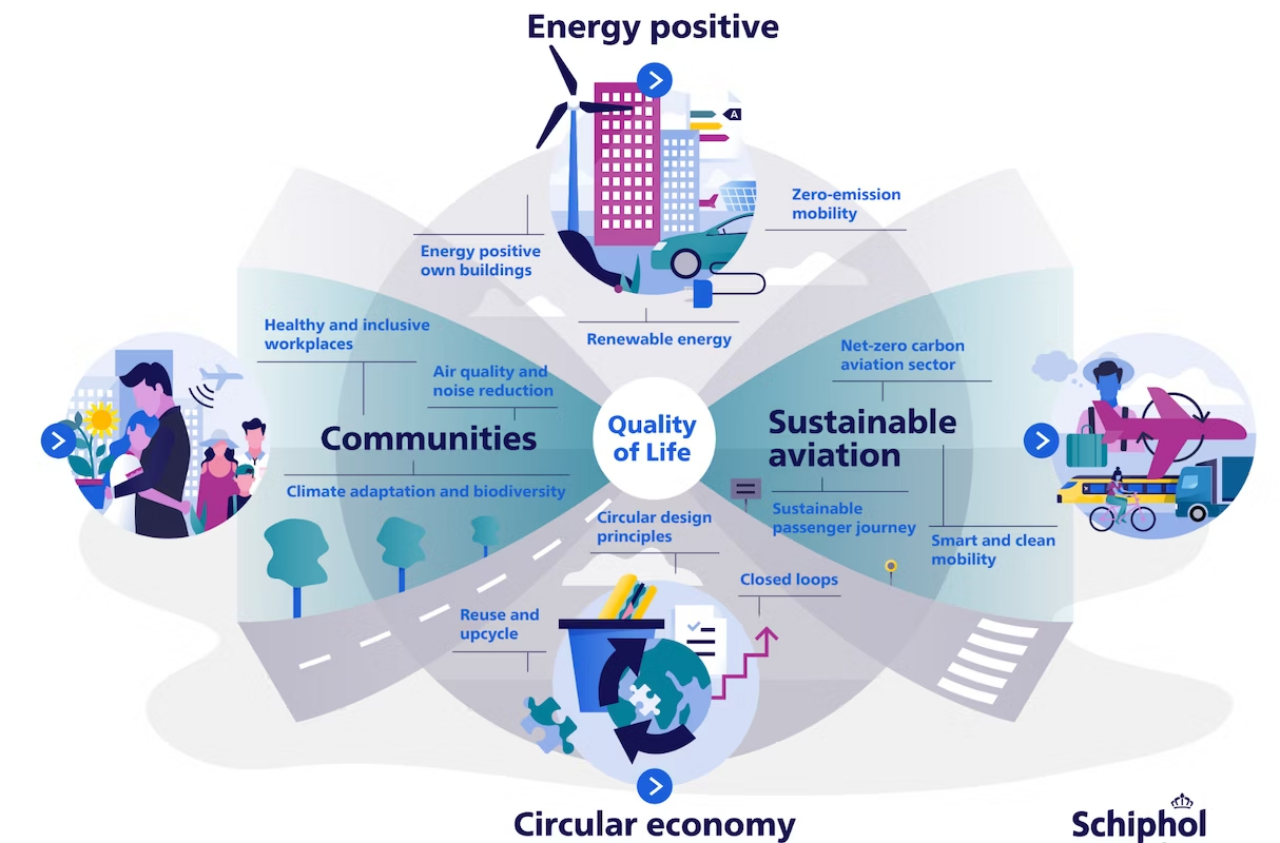Sustaining your world: Vision and strategy towards the most sustainable airports, Royal Schiphol Group, April 2022
Find out more about the five issues airports can tackle to be more sustainable in the report.
Implementing sustainable strategies in airports
Having considered what makes an airport sustainable, airports may then consider preparing their sustainability roadmaps. The following approaches can assist airports in preparing their sustainability programmes.
Holistic systems thinking
Airport leaders can start to work holistically across their common systems, rather than in departmental silos and disparate systems. Sustainability requires an overall perspective and therefore fresh ways of thinking may be necessary.
Data and digital solutions
Airports can gain essential insights across their ecosystems to find out how and where they can reduce their carbon footprint through the data they generate and deep learning models.
In fact, projections are that up to 10 percent of aviation’s emissions can be saved through the operational efficiencies that data-driven understandings give. From forecasting energy demand, to analysing flight operations, to reducing fuel consumption, to shutting off baggage handling operations momentarily based on predicted throughputs, airports are better able to make informed decisions at every level by using digital solutions.
Communicating the message
Critically, airports can start to promote the positive transformations they are implementing, even if this entails remodelling their sustainability reporting strategies in ways that are more informative and engage their stakeholders. Fortunately, data-driven insights are making it easier for airports to substantiate their sustainability claims and progress.
The shifting mindset toward sustainability
There has been a shift in mindset as airports around the world are seeking to embed sustainability throughout their ecosystems. The issue is no longer a surface one, but one airports are seeking to incorporate in their infrastructural frameworks and operational processes. Moreover, they expect their suppliers to provide innovations that help them meet their sustainability targets.
Many airport leaders see the imminent sustainability challenges, and for this reason, are weaving sustainability through future business practices and long-term airport development planning.
Airports leading the way towards sustainability
Most airports around the world are deploying many sustainable initiatives, driven not least by environmental pressure but also by the energy crisis and rising fuel costs.
Each airport is finding its own way to infuse sustainability into its organisational framework. While there are too many examples to name, our report takes a look at San Francisco International Airport, airports run by Swedavia in Sweden, Cochin International Airport in India, airports run by Finavia in Finland and Berlin Brandenburg Airport.
To learn how airports can be more adaptive and resilient in prevailing uncertainty, read the full report here.





